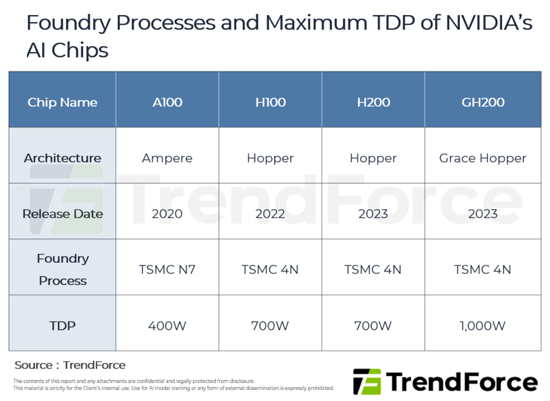
|
시장보고서
상품코드
1848182
온칩 냉각 경쟁 : TSMC, Samsung, Intel 전략 분석On-Chip Cooling Race: TSMC, Samsung, Intel Strategies Analysis |
||||||
AI 애플리케이션의 급증은 반도체 산업의 발전과 성장에 박차를 가하고 있지만, 동시에 새로운 도전을 불러일으키고 있습니다. 물리적인 한계에 가까워지고 있는 첨단 공정 기술과 공정 미세화가 점점 더 어려워지고 있는 가운데, 방열이 주요 반도체 주조 공장의 주요 관심사로 떠오르고 있습니다.
AI 서버에 사용되는 칩, 특히 GPU의 성능은 지속적으로 향상되고 있습니다. 그 결과, 개별 칩의 열 설계 전력(TDP)은 킬로와트 수준에 이르렀습니다. 기존의 공냉식 기술은 물리적 한계에 다다랐고, 수냉식 기술의 부상으로 길을 열어주고 있습니다. 동시에 반도체 업계와 관련 학계 및 연구기관은 칩 내 임베디드 수냉 솔루션 개발에 적극적으로 투자하고 있습니다.
주요 하이라이트
- 첨단 공정이 가져오는 열 관리의 과제
- 온칩 냉각 기술의 등장
- 온칩 임베디드 냉각
- 임베디드 온칩 냉각은 미래의 중요한 냉각 기술입니다.
- 주요 파운드리 업체(TSMC/Samsung/Intel)에서 온칩 냉각 솔루션 출시
- 주요 주조 제조업체의 온칩 냉각 솔루션 배포
샘플

목차
제1장 AI 칩은 점점 더 뜨거워지고 있다
제2장 첨단 프로세스가 가져오는 열 관리 과제
제3장 냉각 기술의 최신 동향
제4장 온칩 냉각 기술의 등장
제5장 주요 주조에서 온칩 냉각 솔루션의 전개
제6장 TRI의 견해
KSM 25.10.31The surge in AI applications has fueled the development and growth of the semiconductor industry but has also brought new challenges. Apart from advanced process technology nearing physical limits and the increasing difficulty of process miniaturization, heat dissipation has emerged as a primary concern for major semiconductor foundries.
Chips used in AI servers, particularly GPUs, continue to improve in terms of performance. Consequently, the thermal design power (TDP) of individual chips has reached kilowatt levels. The traditional air cooling technology is approaching its physical limits, making way for the rise of liquid cooling technology. At the same time, the semiconductor industry and related academic research institutions are actively investing in the development of embedded liquid cooling solutions within chips.
Key Highlights:
- Thermal Management Challenges Brought by Advanced Processes.
- Emergence of On-Chip Cooling Technology.
- On-Chip Embedded Cooling.
- Embedded On-Chip Cooling to Become a Key Cooling Technology in the Future.
- Deployment in On-Chip Cooling Solutions among Major Foundries (TSMC / Samsung / Intel).
- Deployment in On-Chip Cooling Solutions among Major Foundries.
SAMPLE VIEW

Table of Contents
1. AI Chips Are Getting Hotter and Hotter
- Table 1: Foundry Processes and Maximum TDP of NVIDIA's AI Chips
2. Thermal Management Challenges Brought by Advanced Processes
- Figure 1: Traditional Cooling Architecture for Semiconductor Chip and Temperature Variations
- Figure 2: Simulation Test Results from IMEC
3. Latest Developments in Cooling Technologies
- Table 2: Comparison of Current Cooling Technologies
4. Emergence of On-Chip Cooling Technology
- Figure 3: Srikanth Rangarajan and Research Team Segmented Cooling Technology of Chips from Inside Out into T1-T4
- Figure 4: Structural Schematics of TED Embedded Thermoelectric Component
- Figure 5: Structural Schematics of Embedded Micro-Jet Cooling
- Figure 6: Comparison of Cooling Effect between Traditional Liquid-Cooling and Embedded Micro-Jet Cooling under the Same 500micrometer Unit
- Figure 7: Microchannel Cooling Embedded in Power Electronic Chips
- Figure 8: Cross-Sectional Comparison of Traditional Cold Plates and Microchannel Cooling Components
- Figure 9: Technical Advancement of Next-Gen HBM Cooling
- Figure 10: KAIST's Projection on Various Technical Nodes and Corresponding Cooling Technology of HBM
5. Deployment in On-Chip Cooling Solutions among Major Foundries
- Figure 11: TSMC's IMC-Si Process
- Table 3: Comparison of Samsung's FOWLP Technology
- Figure 12: Intel's Package-Level Liquid-Cooling Technology
- Figure 13: Intel Showcasing TIM Solutions Corresponding to Various Application Scenarios and Cost



















